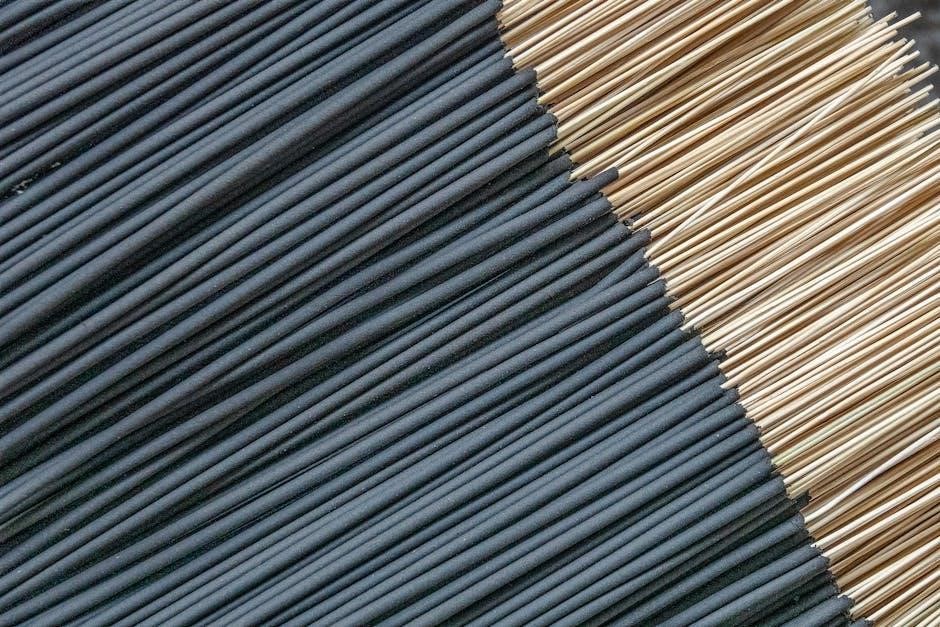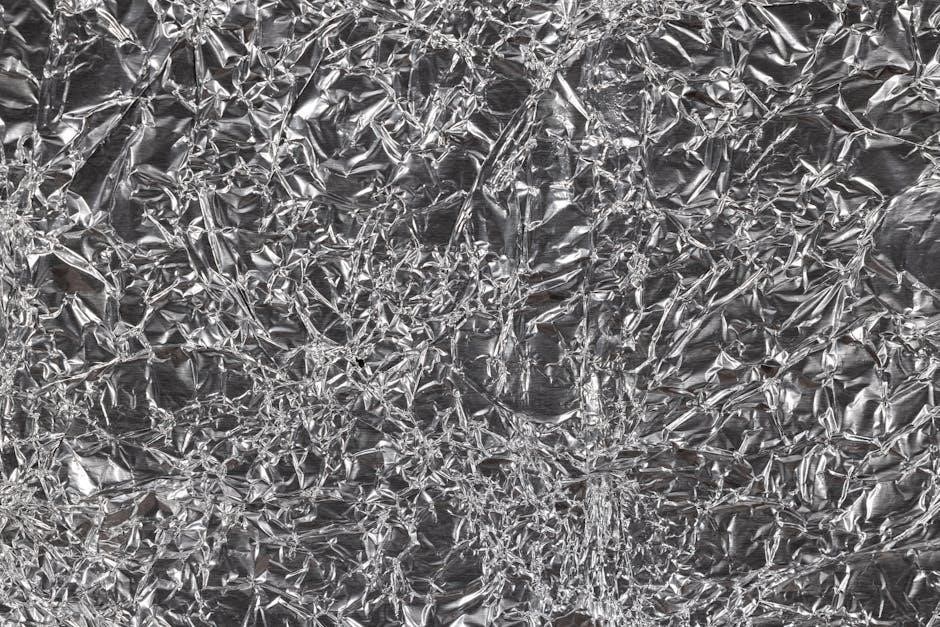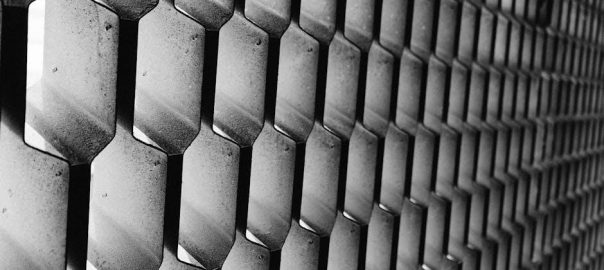7075-T6 aluminum is a high-strength alloy renowned for its exceptional mechanical properties and excellent machinability. Widely used in aerospace and aviation, it offers a high strength-to-weight ratio, making it ideal for structural components in demanding applications.
Overview of 7075-T6 Aluminum Alloy
7075-T6 aluminum alloy is a high-strength, lightweight material widely used in aerospace and aviation due to its exceptional strength-to-weight ratio. The T6 temper, achieved through solution heat treatment and artificial aging, enhances its mechanical properties, making it ideal for highly stressed structural components. Known for its good machinability and resistance to fatigue, this alloy is a popular choice for aircraft parts, offering a unique combination of durability and performance in demanding environments.
Importance in Aerospace and Aviation Applications
7075-T6 aluminum alloy is critical in aerospace and aviation due to its high strength, low density, and excellent fatigue resistance. Its ability to withstand extreme stress makes it ideal for aircraft components, such as wings, fuselage parts, and engine components. The alloy’s high strength-to-weight ratio enhances fuel efficiency and performance, making it a cornerstone material in modern aviation engineering and a preferred choice for building lightweight yet durable aircraft structures.
Chemical Composition
7075-T6 aluminum alloy primarily consists of aluminum with key additions of zinc, magnesium, and copper. These elements enhance strength, corrosion resistance, and mechanical properties, making it versatile for aerospace applications.
Key Elements in 7075-T6 Alloy

The 7075-T6 alloy’s chemical composition includes aluminum as the base metal, with significant additions of zinc, magnesium, and copper. Zinc contributes to its high strength and age-hardening capabilities, while magnesium enhances corrosion resistance and weldability. Copper, on the other hand, plays a role in increasing the alloy’s tensile strength and fatigue resistance. Additionally, trace elements like chromium and titanium are present to further refine the material’s properties, ensuring optimal performance in high-stress applications.
Role of Zinc, Magnesium, and Copper
Zinc is the primary alloying element in 7075-T6, significantly enhancing strength through age-hardening. Magnesium improves workability and corrosion resistance, crucial for aerospace applications. Copper, though present in smaller amounts, boosts tensile strength and fatigue resistance, ensuring durability in high-stress environments. Together, these elements create a high-performance alloy with exceptional mechanical properties and versatility for demanding industries.
Impact of Trace Elements on Material Properties
Trace elements like titanium and zirconium refine grain structure, enhancing mechanical properties and preventing recrystallization. Chromium and manganese improve corrosion resistance and high-temperature strength, while iron and silicon, in controlled amounts, maintain weldability and ductility. These trace elements collectively optimize the alloy’s microstructure, ensuring balanced strength, durability, and resistance to environmental stressors, making 7075-T6 highly suitable for aerospace and defense applications.

Physical Properties
7075-T6 aluminum exhibits a density of 2.81 g/cm³, high thermal conductivity, and moderate thermal expansion. Its physical properties ensure stability across various environmental conditions.
Density and Specific Gravity
7075-T6 aluminum has a density of approximately 2.81 g/cm³, which translates to a specific gravity of around 0.102 lb/in³. This relatively low density makes it an excellent choice for applications where weight reduction is critical without compromising strength. Its specific gravity is comparable to other high-strength aluminum alloys, ensuring efficient material usage in aerospace and aviation industries. This property contributes to its high strength-to-weight ratio, a key factor in its widespread adoption for structural components. The balance of density and strength ensures optimal performance in demanding environments.
Thermal Conductivity and Expansion
7075-T6 aluminum exhibits a thermal conductivity of approximately 130 W/m·K, allowing efficient heat dissipation in high-temperature applications. Its coefficient of thermal expansion (CTE) is around 23.4 µm/m·°C, ensuring dimensional stability under varying thermal conditions. These properties make it suitable for aerospace components exposed to fluctuating temperatures. The alloy’s thermal characteristics, combined with its high strength, enable reliable performance in environments where both thermal and mechanical stresses are present, further solidifying its use in critical structural applications.
Melting Point and Latent Heat
7075-T6 aluminum has a melting point of approximately 475°C (887°F), with a latent heat of fusion around 290 J/g. These thermal properties are critical for manufacturing processes like welding and casting, ensuring the alloy retains its structural integrity during high-temperature operations. The material’s melting behavior and energy absorption characteristics make it suitable for applications requiring precise thermal management, balancing strength and thermal stability in aerospace and industrial environments.
Mechanical Properties
7075-T6 aluminum exhibits high ultimate tensile strength (83 ksi), yield strength (73.5 ksi), and Brinell hardness (150). It offers excellent fatigue resistance, making it ideal for aerospace applications requiring high durability.
Ultimate Tensile Strength (UTS)
7075-T6 aluminum alloy exhibits an impressive ultimate tensile strength (UTS) of approximately 83 ksi (570 MPa), making it one of the strongest aluminum alloys available. This high UTS is achieved through the T6 temper, which involves solution heat treatment followed by artificial aging. The alloy’s high strength-to-weight ratio and excellent mechanical properties make it a critical material for aerospace and aviation applications, where durability and performance under stress are paramount. Its UTS ensures reliability in highly loaded structural components, making it a preferred choice for demanding environments.
Yield Strength and Elongation at Break
7075-T6 aluminum alloy demonstrates a yield strength of approximately 78.3 ksi (540 MPa), showcasing its ability to withstand significant stress before permanent deformation. Elongation at break is around 11%, indicating a balance between high strength and moderate ductility. The T6 temper enhances these properties, making the alloy suitable for structural components requiring high load-bearing capacity. This combination of yield strength and elongation ensures reliability in aerospace applications, where both durability and flexibility are critical. Its performance under stress makes it a preferred choice for high-stress environments.
Hardness and Brinell Hardness Number
7075-T6 aluminum alloy exhibits a Brinell hardness number of 150, reflecting its high resistance to indentation and wear. This hardness is achieved through the T6 tempering process, which involves solution heat treatment followed by artificial aging. The material’s hardness contributes to its excellent mechanical strength, making it suitable for high-stress applications. While the alloy offers superior hardness, it maintains sufficient ductility for fabrication, ensuring a balance between strength and formability. This property is critical for components requiring durability and resistance to deformation in demanding environments.
Fatigue Resistance and Endurance Limit
7075-T6 aluminum alloy demonstrates strong fatigue resistance, with an endurance limit suitable for cyclic loading applications. Its high strength-to-weight ratio enhances durability under repeated stress, making it ideal for aerospace components. The T6 temper further optimizes these properties, ensuring reliability over extended service life. While not immune to fatigue, proper design and material selection minimize risks, maintaining structural integrity in dynamic conditions. This balance of strength and fatigue resistance makes 7075-T6 a preferred choice for critical applications where failure tolerance is minimal.
Fracture Toughness and Impact Resistance
7075-T6 aluminum alloy exhibits high fracture toughness, with a KIC value of approximately 25-30 MPa·m1/2, ensuring resistance to crack propagation. Its impact resistance is also notable, making it suitable for high-stress applications. The T6 temper enhances these properties by refining grain structure and precipitating strengthening phases. However, like many high-strength alloys, it is less resistant to stress-corrosion cracking compared to overaged tempers like T7351. Despite this, its excellent balance of strength and toughness makes it a preferred material for critical aerospace and defense components.

Corrosion Resistance
7075-T6 aluminum exhibits moderate corrosion resistance, suitable for various environments. However, the T7351 temper offers enhanced stress-corrosion cracking resistance compared to the T6 temper.
General Corrosion Behavior
7075-T6 aluminum alloy exhibits moderate corrosion resistance, suitable for various environments. However, it is more susceptible to corrosion compared to other aluminum alloys like 6061-T6. The material’s high strength and zinc content make it prone to stress-corrosion cracking in harsh conditions. Surface treatments and coatings are often applied to enhance its corrosion resistance. While not ideal for highly corrosive environments, its strength-to-weight ratio makes it a preferred choice for aerospace applications where corrosion is manageable. Proper surface protection can mitigate corrosion risks effectively.

Stress-Corrosion Cracking Resistance
7075-T6 aluminum alloy exhibits moderate resistance to stress-corrosion cracking (SCC), but its susceptibility increases in aggressive environments. The T6 temper is more prone to SCC compared to the overaged T7351 temper, which offers improved resistance. While T6 is widely used in aerospace due to its high strength, its SCC limitations necessitate careful material selection for high-stress, corrosive environments. Surface treatments and design considerations can mitigate SCC risks, but the alloy is generally less resistant than other tempers like T7351 in such conditions.
Comparison of T6 and T7351 Tempers
The T6 and T7351 tempers of 7075 aluminum differ significantly in their properties. T6 offers higher strength but lower resistance to stress-corrosion cracking (SCC). T7351, being overaged, provides enhanced SCC resistance and is often preferred in marine and high-stress environments. While T6 is ideal for applications requiring peak strength, T7351 is chosen when durability and resistance to environmental factors are critical. Both tempers maintain excellent machinability and strength-to-weight ratios, making them versatile choices in aerospace and defense industries.

Fabrication and Manufacturing
7075-T6 aluminum exhibits excellent machinability and can be welded using resistance welding. It undergoes solution heat treatment and artificial aging to achieve the T6 temper, enhancing its mechanical properties.
Machinability and Tooling Considerations
7075-T6 aluminum exhibits good machinability, particularly in the T6 and T651 tempers, making it suitable for complex machining operations. However, it can experience galling during machining, which may require the use of uncoated tools to mitigate. Sharp cutting tools and proper machining techniques are essential to avoid galling and ensure precise results. The alloy is well-suited for high-speed machining, and carbide tools are often recommended for optimal performance. These considerations make 7075-T6 a versatile material for fabrication in aerospace and high-strength applications.
Welding Techniques and Joint Efficiency
7075-T6 aluminum alloy exhibits fair weldability, with MIG and TIG welding being the most commonly used techniques. Clean, oil-free surfaces are essential to ensure high-quality welds. Post-weld heat treatment, such as the T6 temper, is often applied to restore mechanical properties; However, welding can reduce joint efficiency to approximately 50-60% of the base material’s strength, making it less efficient compared to other aluminum alloys like 6061-T6. Proper welding techniques and post-treatment are critical to achieving optimal joint performance in structural applications.
Heat Treatment and Aging Processes
The 7075-T6 alloy undergoes solution heat treatment followed by artificial aging to achieve its high mechanical strength. The T6 temper involves aging at 120°C for 24 hours, resulting in a fine precipitate structure that enhances strength and hardness. Natural aging can occur after welding, though artificial aging is more controlled. The T73 temper offers improved stress-corrosion resistance through overaging. Proper heat treatment is critical for optimizing the alloy’s properties, making it suitable for high-performance applications.

Applications

7075-T6 aluminum is widely used in aerospace for aircraft structures, defense for military equipment, and industrial applications requiring high strength and durability. Its versatility ensures broad utility.
Aerospace Industry Uses
7075-T6 aluminum is a cornerstone in aerospace engineering, prized for its high strength-to-weight ratio and durability. It is extensively used in aircraft structures, including wings, fuselage components, and landing gear. The alloy’s exceptional resistance to fatigue and stress-corrosion cracking makes it ideal for components subjected to extreme stress and harsh environments. Additionally, its lightweight properties contribute to fuel efficiency in aircraft, enhancing overall performance. This has solidified its role as a critical material in modern aviation and space exploration applications.
Defense and Military Applications
7075-T6 aluminum is widely utilized in defense and military applications due to its exceptional strength, durability, and resistance to stress-corrosion cracking. It is employed in military aircraft components, ballistic missile parts, and naval equipment, where high performance under extreme conditions is critical. The alloy’s lightweight properties and high strength-to-weight ratio make it ideal for reducing overall system weight while maintaining structural integrity. Its resistance to fatigue and corrosion ensures reliability in harsh environments, making it indispensable for tactical and defense-related equipment.
Other Industrial and Commercial Uses
Beyond aerospace, 7075-T6 aluminum is used in various industrial and commercial applications due to its high strength and durability. It is employed in the transportation industry for manufacturing truck and railway components, where weight reduction and strength are critical. Additionally, it is utilized in sports equipment, such as bicycles and golf clubs, for its lightweight yet robust properties. The alloy also finds applications in consumer goods, like camera parts and marine hardware, and in tooling for molds and dies, benefiting from its hardness and wear resistance.
Comparison with Other Aluminum Alloys
7075-T6 aluminum excels with its high strength, surpassing 6061-T6 and 2024-T3 alloys. Its superior fatigue resistance and strength-to-weight ratio make it a preferred choice for aerospace applications.
7075-T6 vs. 6061-T6
7075-T6 aluminum offers significantly higher tensile strength and fatigue resistance compared to 6061-T6. While 6061-T6 is known for its weldability and corrosion resistance, 7075-T6 excels in high-stress applications due to its superior mechanical properties. The T6 temper in both alloys provides peak strength, but 7075-T6 achieves higher ultimate tensile strength (83 ksi vs. 45 ksi). However, 6061-T6 is more versatile for general engineering, whereas 7075-T6 is specialized for aerospace and defense due to its exceptional performance under extreme loads.
7075-T6 vs. 2024-T3
7075-T6 aluminum exhibits higher tensile strength (83 ksi) compared to 2024-T3 (63 ksi), making it more suitable for high-stress aerospace applications. While 2024-T3 offers excellent toughness and fatigue resistance, 7075-T6 provides superior strength-to-weight ratio and corrosion resistance. The T6 temper in 7075 involves solution heat-treatment and artificial aging, whereas 2024-T3 is solution heat-treated and naturally aged. Both alloys are widely used in aircraft structures, but 7075-T6 is preferred for critical components requiring ultimate strength, while 2024-T3 is favored for its formability and moderate strength.
Unique Benefits of 7075-T6
7075-T6 aluminum offers exceptional strength-to-weight ratio, high fracture toughness, and resistance to stress corrosion, making it ideal for aerospace applications. Its T6 temper enhances mechanical properties like tensile strength and elongation, providing superior performance in critical aircraft components. The alloy’s excellent machinability and resistance to fatigue further distinguish it as a premier choice for high-stress structural parts, ensuring durability and reliability in demanding environments.
Environmental and Thermal Factors
7075-T6 aluminum exhibits good resistance to environmental stressors and performs well at elevated temperatures. It retains strength in cryogenic conditions and shows moderate thermal conductivity, making it versatile for diverse applications.
Performance at Elevated Temperatures
7075-T6 aluminum demonstrates stable mechanical properties at elevated temperatures, with thermal conductivity of 130 W/m-K. It maintains structural integrity in high-heat environments, though strength decreases slightly above 200°C. Its coefficient of thermal expansion is 23.4 μm/m·°C, ensuring dimensional stability. This alloy is suitable for applications requiring moderate heat resistance, balancing thermal and mechanical performance effectively.

Behavior at Cryogenic Temperatures
7075-T6 aluminum retains its mechanical properties at cryogenic temperatures, with yield strength and hardness increasing slightly. It exhibits minimal embrittlement, making it suitable for cryogenic applications. The alloy’s strength-to-weight ratio remains favorable, ensuring reliability in low-temperature environments. Its resistance to cracking under extreme cold makes it ideal for storage tanks and cryogenic equipment, maintaining structural integrity in such conditions.
Resistance to Environmental Stressors
7075-T6 aluminum demonstrates moderate resistance to environmental stressors, with improved stress-corrosion cracking resistance in the T7351 temper; It withstands humidity, saltwater, and certain chemicals, making it suitable for marine and outdoor applications. While not immune to corrosion, its high strength and durability ensure reliability in harsh environments. Proper surface treatments can enhance its resistance, extending service life in demanding conditions.

Cost and Availability
7075-T6 aluminum is moderately expensive due to its high-performance properties. It is widely available globally, with major suppliers ensuring consistent supply to meet industrial demands.
Factors Affecting Material Cost
The cost of 7075-T6 aluminum is influenced by raw material prices, particularly zinc and magnesium. Production complexity, including heat treatment and aging processes, also contributes. Market demand, especially from aerospace and defense sectors, drives pricing. Additionally, global supply chain dynamics, tariffs, and supplier negotiations impact final costs, making it a material with moderate to high expense due to its specialized properties and applications.
Global Suppliers and Market Trends
Leading global suppliers of 7075-T6 aluminum include major aerospace metal distributors and specialty alloy manufacturers. Market trends indicate steady demand driven by aerospace and defense industries. The rise of emerging markets and advancements in manufacturing technologies are shaping supply dynamics. Fluctuations in raw material prices and geopolitical factors also influence the market, ensuring a competitive landscape with suppliers continuously adapting to meet evolving industry needs and sustainability standards.
7075-T6 aluminum excels as a high-strength, corrosion-resistant alloy, ideal for aerospace applications. Its unique properties ensure continued demand, driving innovation and future advancements in materials science and engineering.
7075-T6 aluminum alloy is renowned for its exceptional strength-to-weight ratio, with a tensile strength of up to 540 MPa and a yield strength of 465 MPa. It exhibits high fracture toughness, excellent machinability, and resistance to fatigue. The alloy’s density is 2.81 g/cm³, making it lightweight yet durable. Common tempers like T6 and T651 provide superior mechanical properties, while T7351 enhances stress-corrosion resistance. Its high strength and corrosion resistance make it ideal for aerospace and aviation applications, where reliability and performance are critical.
Future Outlook and Emerging Applications
7075-T6 aluminum is expected to see growing demand in aerospace for lightweight, high-performance components. Advances in manufacturing techniques, such as additive manufacturing, could expand its use in complex geometries. Emerging applications include renewable energy systems and electric vehicles, where its strength-to-weight ratio is advantageous. Research into new tempers and surface treatments aims to enhance corrosion resistance and sustainability, ensuring 7075-T6 remains a critical material in advanced industries
